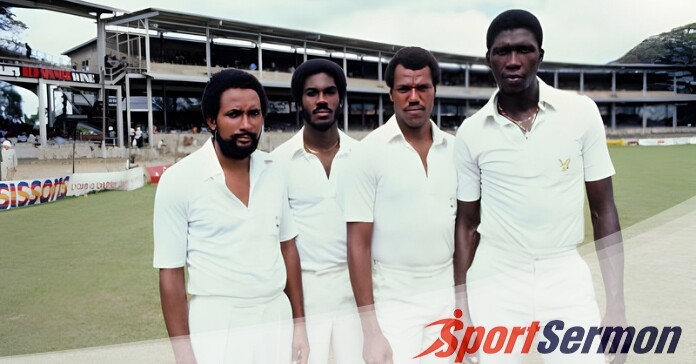The Fiery Heartbeat of the 80s: The West Indies Pace Attack
In the 80s, cricket witnessed the reign of a bowling unit from West Indies unlike any other unit. Towering figures, rippling with athleticism, thundered down the pitch, a hurricane of pace and aggression. The mere sight of these fast bowlers sent shivers down the spines of even the most seasoned batsmen.
It wasn’t just the relentless barrage of wickets that struck fear, but in the era where safety hadn’t high standards, these pacers often aimed at the head, tested nerves and reflexes alike. The searing yorker, spitting at the batsman’s toes, threatened to shatter stumps and confidence in equal measure.
These quicks from West Indies in the 80s wielded their weapons with the precision and ruthlessness like no other nation could produce. Every ball was a declaration of dominance, a testament to their untamed spirit and unyielding desire for victory.
1) Sir Curtly Ambrose
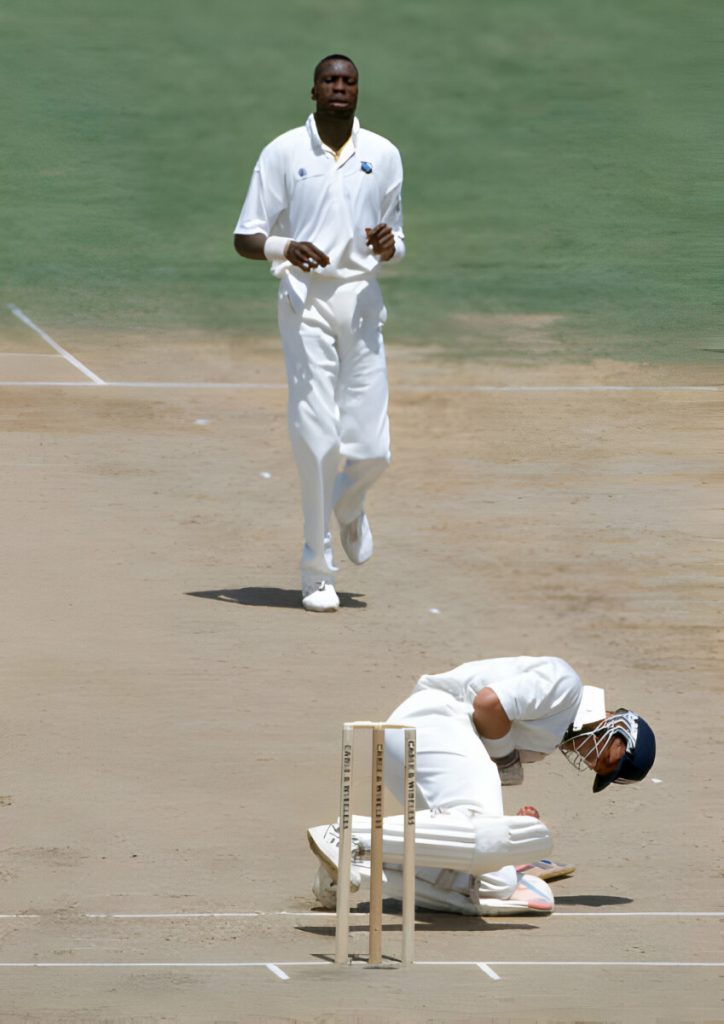
Sir Curtly Ambrose, a towering figure both literally and figuratively, stands tall as one of the greatest fast bowlers the cricketing world has ever witnessed. Gracing the field from 1988 to 2000, his 6’7″ frame and express pace generated spells that were as mesmerizing as they were intimidating.
2) Joel Garner
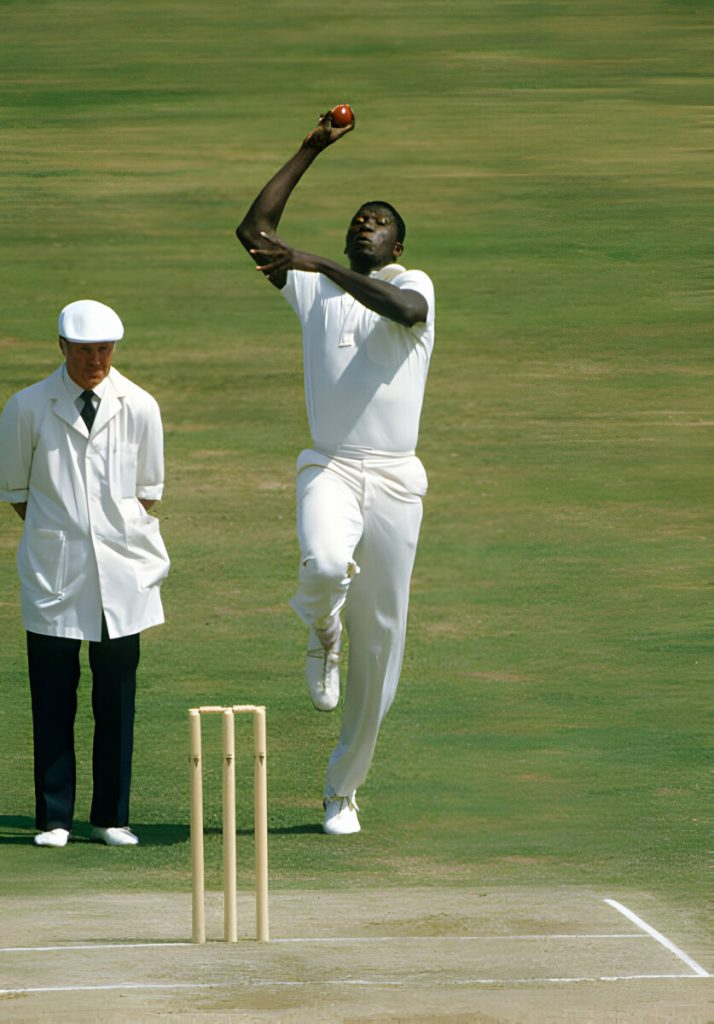
Towering over the pitch at a colossal 6’8″, Joel Garner, nicknamed “Big Bird” for good reason, was a West Indian fast bowling legend who struck fear into the hearts of batsmen in the 70s and 80s. His long stride, searing pace, and ability to extract disconcerting bounce made him a nightmare to face.
3) Andy Roberts
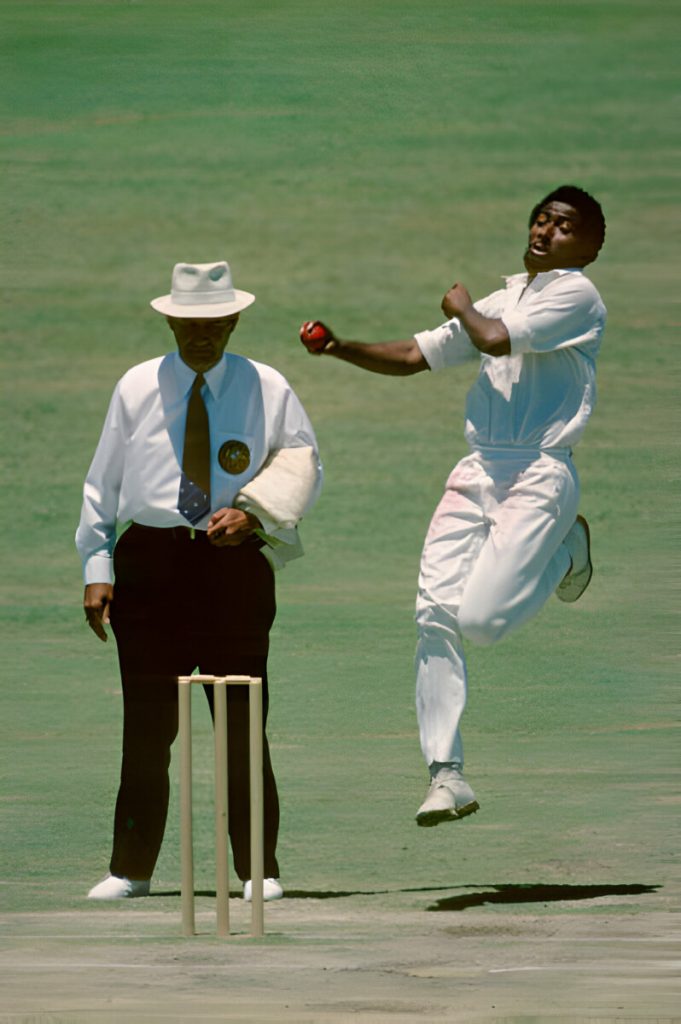
Andy Roberts, the “Antiguan Express,” was a fearsome fast bowler who tore through batting lineups in the 1970s and 80s. Standing tall at 6’2″, Roberts possessed raw pace and ferocious aggression, unleashing a barrage of bouncers and toe-crushing yorkers that sent shivers down spines and splintered stumps with alarming regularity. His signature weapon, the “double bounce,” a deceptive delivery that seemed to hang in the air forever before dipping late, left batsmen bewildered and vulnerable.
4) Michael Holding
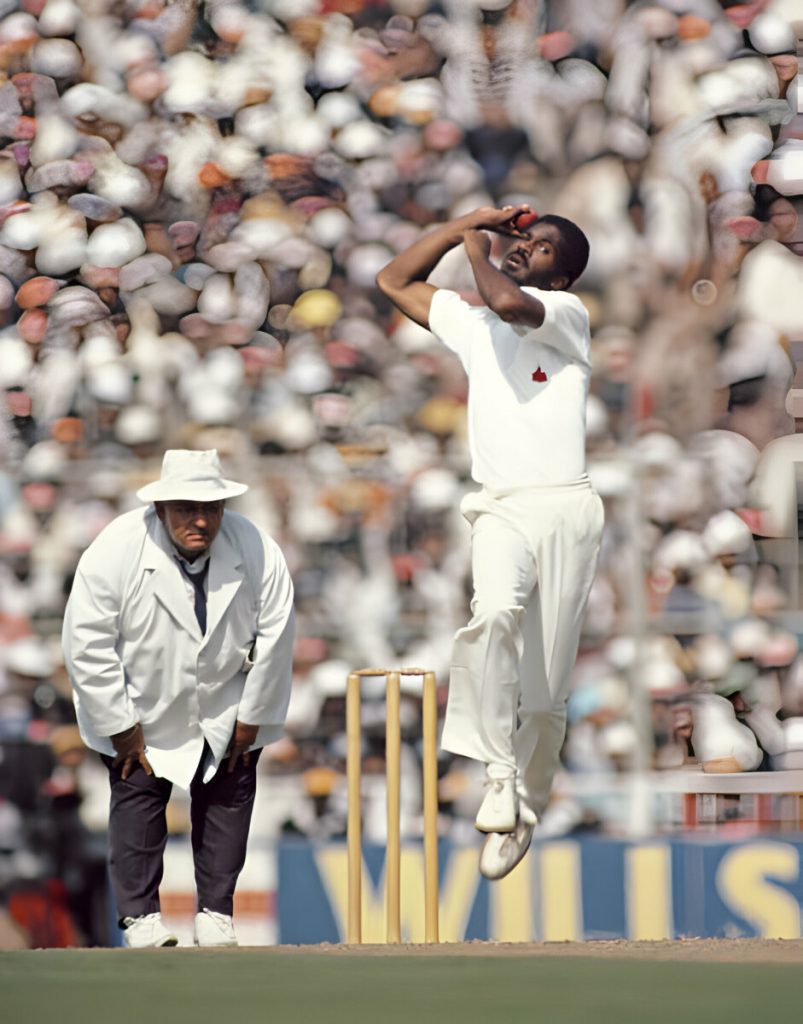
Michael Holding, nicknamed “Whispering Death,” wasn’t just fast, he was lightning. A tall, silent figure, he’d glide to the crease, then unleash thunderbolts that ripped through the air and defenses. Batsmen flinched, stumps shattered, that’s how it happened. He was part of the legendary West Indian pace quartet, a band of brothers who terrorized batting lineups worldwide.
5) Colin Croft
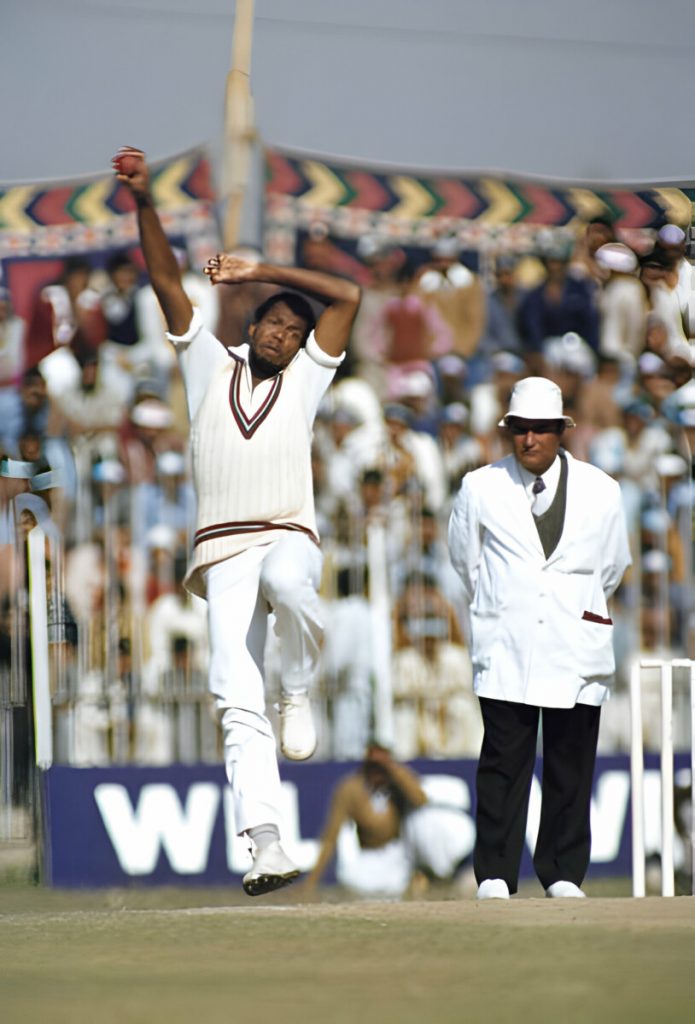
Colin Croft unleashed a whirlwind of fast bowling in the late 70s and early 80s. His tall frame and unorthodox, slingshot action generated vicious pace and off the pitch movement. He was a master of the hostile bouncer, which he often used psychologically to unsettle a batter.
Though his career was tragically cut short, Croft’s 125 Test wickets and fiery spirit cement his place among West Indian fast bowling legends.
Facing these West Indies bowlers in 80s wasn’t just about batting; it was about survival. Every delivery demanded a courage, a battle against the very forces of nature personified in these towering figures.
You can imagine the roar of the crowd behind these bowlers, the thundering footsteps, the searing ball ripping through the air – it was an assault on the senses. No batsman could afford a lapse in concentration, a moment of hesitation, for the consequences were swift and devastating.
The West Indies pace attack of the 80s wasn’t just a bowling unit; it was a force of nature, a symbol of raw power and aggression. Hardly these bowlers relied on change of pace and any other sort of variations.
They defined fast bowling, setting a standard that continues to inspire generations of bowlers and send chills down the spines of even the most confident batsmen.
They were the heartbeat of the 80s, the fiery engines that propelled West Indian cricket to unimaginable heights, forever etching their names in the annals of cricketing history.

